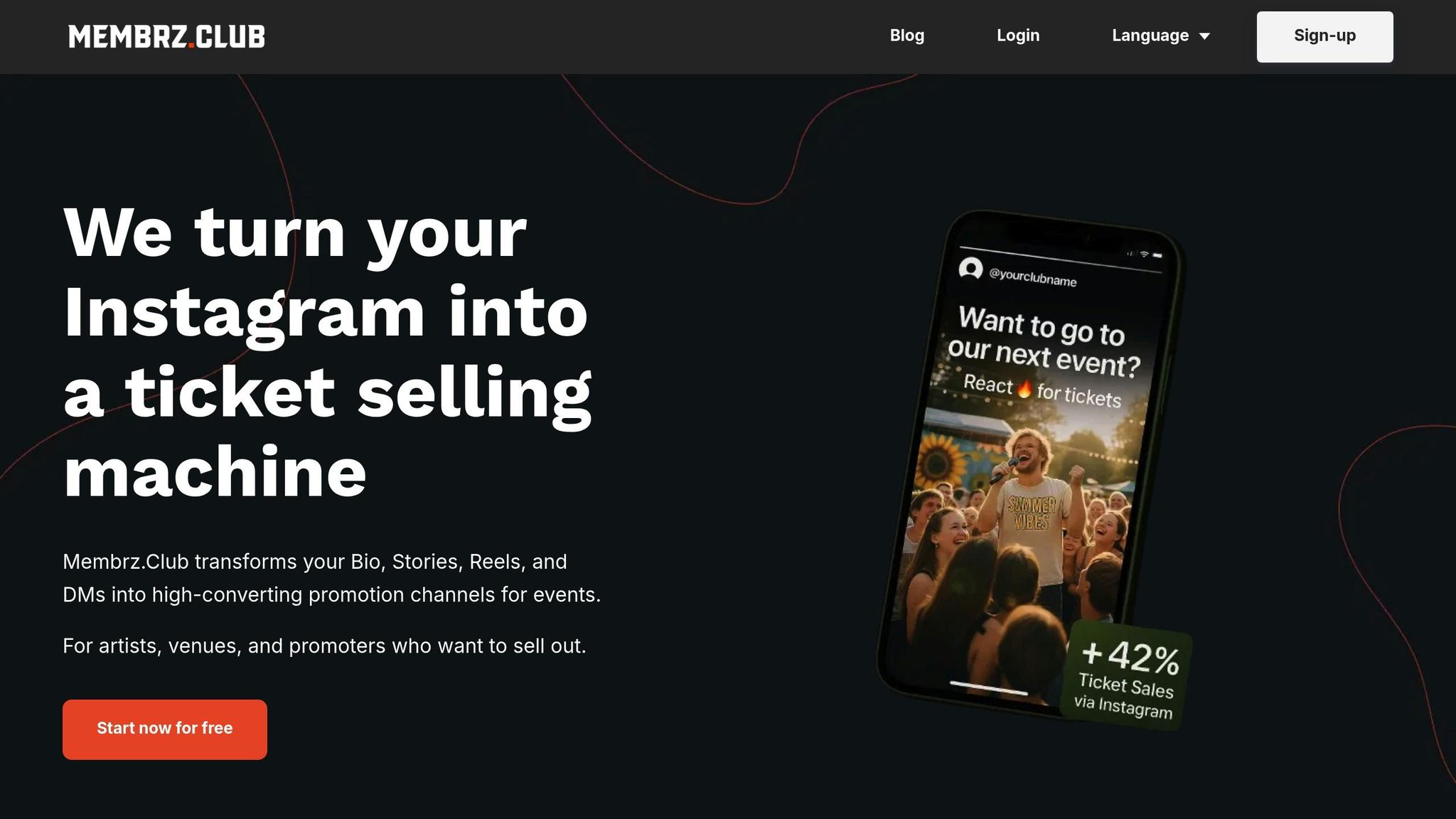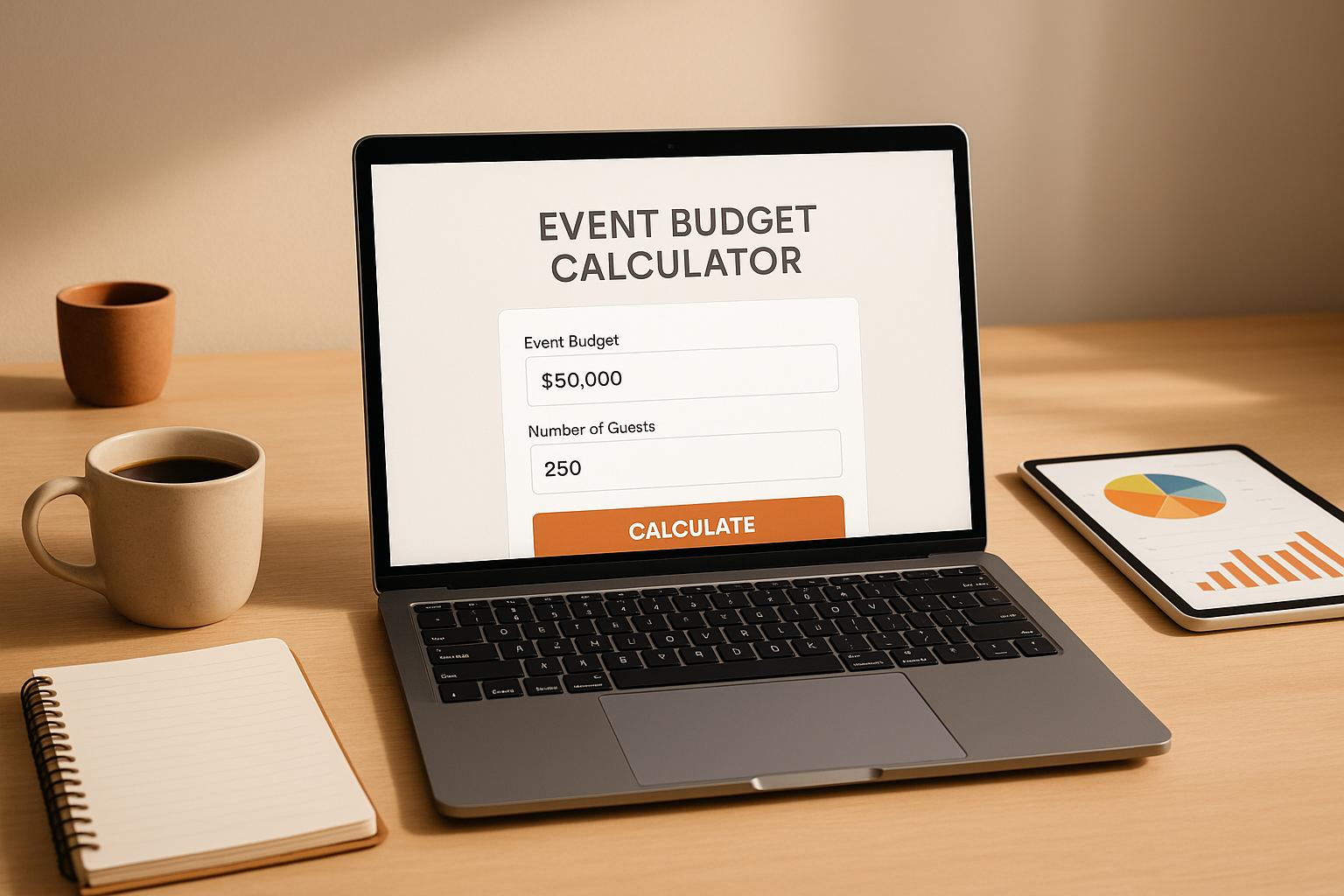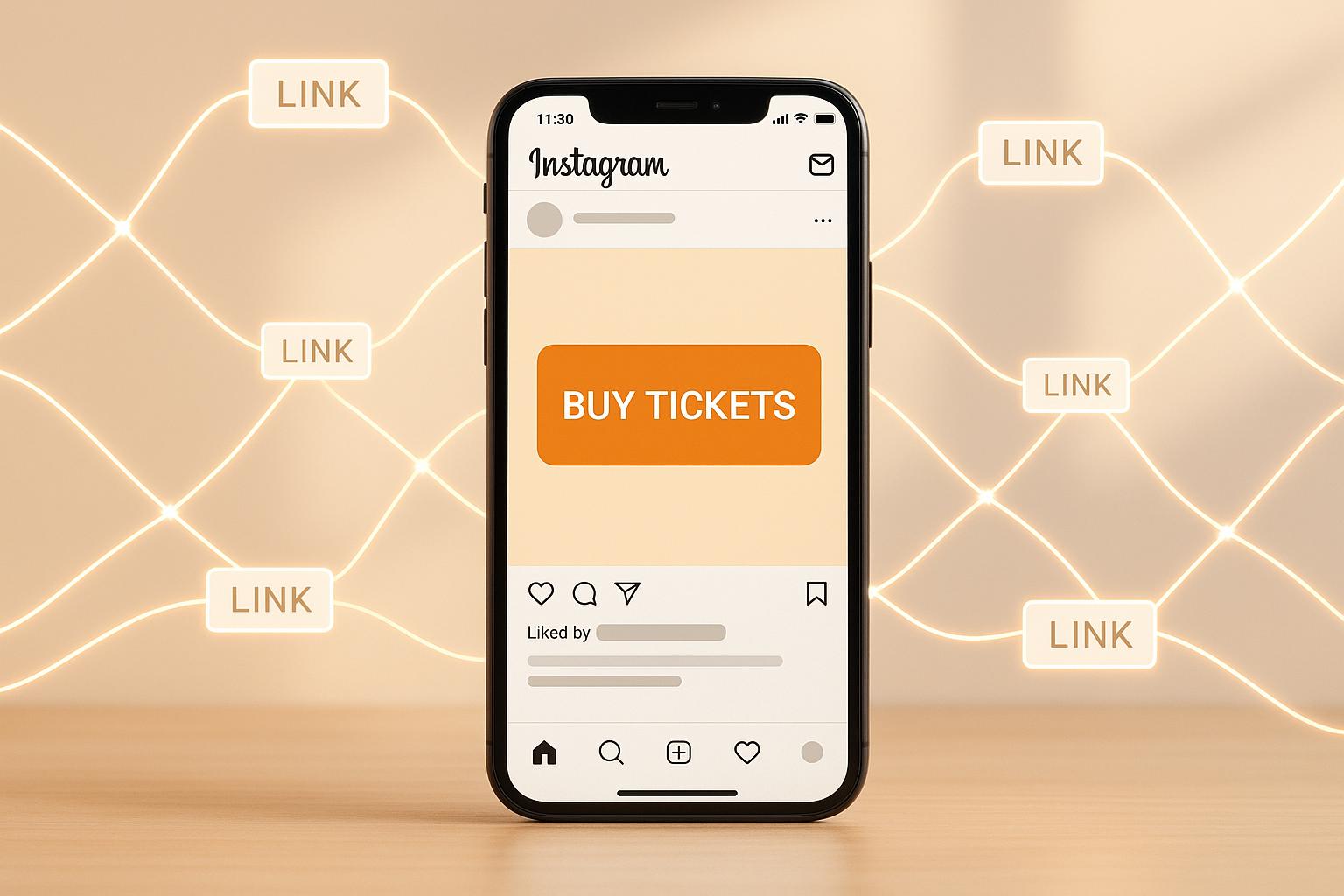When it comes to improving events, analyzing guest data is the game-changer. By turning attendee information from sources like ticketing platforms, social media, and surveys into actionable insights, you can refine marketing, enhance attendee experiences, and increase ROI. Here's what matters most:
- Main Data Sources: Use ticketing systems to track demographics and purchase behaviors, Instagram for real-time engagement, and surveys for direct feedback.
- Key Challenges: Data fragmentation, inconsistent metrics, and low survey participation often hinder effective analysis.
- Solutions: Consolidate data, leverage analytics platforms like Membrz.Club for integration, and focus on behavioral patterns to understand attendee preferences.
- Outcomes: Better event planning, targeted marketing, and personalized follow-ups lead to higher satisfaction and loyalty.
Start by organizing your data, use tools to identify trends, and create feedback loops to continuously improve your events. The goal is simple: use data to make smarter decisions and deliver better results.
Main Data Sources for Understanding Event Attendees
Getting to know your event attendees starts with gathering data from the right sources. The three main avenues for collecting event guest data are ticketing systems and registration forms, social media platforms like Instagram, and on-site as well as post-event feedback. Each of these sources offers distinct insights into attendee preferences and behaviors. Let’s break down how they contribute to building a clearer understanding of your audience.
Ticketing Systems and Registration Forms
Ticketing systems and registration forms are treasure troves of attendee information. Registration forms gather vital details - like age, location, and contact information - while modern ticketing platforms track purchase behaviors. These platforms can reveal ticket type preferences, the timing of purchases, which pricing tiers are most popular, and how attendees discover your event. They can even monitor attendance for specific sessions, helping identify which activities resonate with different audience groups.
For example, analyzing purchase timing can uncover trends in audience engagement. Early bird buyers often represent your most enthusiastic attendees, while last-minute purchasers may respond better to urgency-driven marketing. This data can help fine-tune your promotional strategies and timelines.
Social Media Data from Instagram
Instagram stands out as a powerful tool for gathering event insights. With over 2 billion monthly active users, it’s a platform where people actively engage with brands - 62.3% of users research products and services on Instagram. Through likes, comments, shares, and story interactions, you can gain real-time feedback on your event’s appeal. Plus, with 500 million users viewing Instagram Stories daily, interactive features like polls and quizzes can provide direct input while boosting engagement.
Take PT. Slemmersindo, an event planning agency in Makassar, Indonesia, as an example. Between April and September 2024, they analyzed 578 posts and found their 2,125 followers generated an average of 936 likes per post. Visual content and interactive stories outperformed static images significantly.
"In today's digital age, leveraging Instagram is crucial for us. It allows us to promote our events and engage with our audience in real-time."
– Marketing Manager, PT. Slemmersindo
Social media analytics tools can also help track key metrics, such as engagement rates. For instance, Instagram Reels see 22% higher engagement than standard video content, showing that short-form videos are particularly effective. Additionally, user-generated content offers a window into authentic attendee experiences, helping refine your engagement strategies.
On-Site and Post-Event Feedback
Direct feedback during and after an event provides a detailed look into attendee satisfaction. On-site check-ins allow you to compare actual attendance against registrations, offering insights into show-up rates and potential logistical or marketing issues.
Post-event surveys are another key tool. Sending surveys within 24–48 hours of the event tends to yield the best response rates. These surveys can include satisfaction ratings, offering measurable data to evaluate the event’s success and pinpoint areas for improvement.
You can also use QR codes at various event locations to trigger quick micro-surveys. These might ask targeted questions about specific aspects, such as how easy registration was or the quality of a session. Meanwhile, tools like Google Analytics can track website traffic and session page visits, showing which event details attendees found most useful - or where they dropped off during registration. Together, this feedback completes the data puzzle, giving you actionable insights to improve future events.
Common Problems in Event Audience Data Analysis
Even with robust data collection, event organizers often hit roadblocks when it comes to transforming raw data into actionable insights. Whether it’s data from ticketing platforms, social media, or attendee feedback, these challenges can cloud decision-making and hinder the success of future events. Let’s break down three major issues that can derail audience data analysis.
Data Fragmentation and Inconsistency
One of the biggest challenges is data fragmentation - when critical event data is scattered across multiple platforms. This creates two problems: physical fragmentation, where data is stored in separate systems, and logical fragmentation, where the same data is duplicated or inconsistently formatted across platforms. For example, your ticketing system might log purchases in one format, Instagram analytics might use entirely different metrics, and post-event surveys could collect data in yet another structure. The result? A messy, inconsistent data landscape that demands time-consuming manual reconciliation.
Here’s a staggering statistic: 74% of Dutch SMEs cite isolated data systems as a major barrier to efficiency and accurate forecasting. When your data lives in silos, it’s nearly impossible to get a full picture of how attendees discover, engage with, and experience your events.
"Comprehension of data decreases every time we have to flip a page to compare two sets of information. Proximity is the key to forming relationships between data." – Edward Tufte
Fragmented data doesn’t just waste time - it undermines critical decisions about venue capacity, marketing budgets, and ticket pricing. The solution lies in consolidating data into unified platforms, setting clear data governance rules, and implementing quality checks. Yet, as of 2025, only 27% of European companies have fully implemented a data governance model, showing how far many organizations still have to go.
Understanding Behavioral Metrics
Social media metrics like likes, shares, and comments often fail to reflect what really matters: attendee satisfaction and purchase behavior. This disconnect can lead to flawed marketing strategies. For instance, a post might rack up hundreds of likes, but many of those users may have no intention of attending your event. Meanwhile, loyal attendees who consistently show up might barely engage with your posts.
Traditional metrics prioritize reach and engagement, but these don’t always align with the outcomes event organizers care about - like ticket sales, repeat attendance, or word-of-mouth referrals. To bridge this gap, you need to link social media data with ticketing information and post-event feedback. This approach helps identify the behavioral patterns that truly drive event success.
However, relying on behavioral data alone has its challenges, especially when combined with another common issue: low survey participation.
Low Response Rates from Surveys
Post-event surveys are a direct way to gather attendee feedback, but getting enough responses is an uphill battle. Even when surveys are sent within the ideal 24-48 hour window after an event, response rates are often low. This can lead to skewed data that overrepresents extreme opinions while missing the preferences of more moderate attendees.
Survey fatigue is a growing problem, as consumers are bombarded with feedback requests from countless businesses. This fatigue makes it harder to collect meaningful, representative data. The result? Decisions may end up catering to vocal minorities rather than reflecting the broader audience.
Interestingly, companies with clear accountability frameworks report 32% faster regulatory reporting. This highlights the value of creating systematic feedback methods that go beyond traditional surveys. By incorporating multiple touchpoints throughout the attendee journey - such as real-time feedback during events or post-event follow-ups - you can gather more balanced and actionable insights.
How to Extract Actionable Event Data
Turning raw event data into meaningful insights is essential for improving attendee experiences and achieving event goals. To do this effectively, focus on three key steps: cleaning and consolidating your data, using advanced analytics tools, and interpreting behavioral patterns to understand what your audience truly values. Start by ensuring your data is well-organized and unified, then use analytics platforms to uncover trends that can guide your strategy.
Data Cleaning and Integration
The first step to actionable insights is organizing your data. This involves gathering information from all sources - ticketing platforms, registration forms, Instagram analytics, and post-event feedback - and standardizing it into a single, consistent format.
For example, ensure all dates follow the MM/DD/YYYY format and currency is listed as USD ($). Use automated tools to eliminate duplicate entries and resolve inconsistencies, such as reconciling "John Smith" from one system with "J. Smith" from another. The goal is to create a complete attendee profile that covers all touchpoints.
Combining datasets from different platforms can be tricky. One system might track purchase behavior, another might log social media engagement, and yet another could record post-event satisfaction. Merging these into a unified database enables you to see a full picture of each attendee's journey, from ticket purchase to event participation. Once your data is clean and consolidated, analytics tools can turn it into actionable insights.
Using Analytics Platforms Like Membrz.Club

Integrated analytics platforms like Membrz.Club can simplify the process of analyzing fragmented data. These tools automate much of the work, providing real-time dashboards that combine metrics like Instagram engagement with ticket sales. This gives event organizers a clear, unified view of their audience.
Membrz.Club also offers audience segmentation tools, allowing you to categorize attendees based on demographics, purchase behavior, or engagement levels. This helps identify patterns that can inform targeted marketing strategies. For example, automated campaign tracking can reveal which Instagram posts drive the most ticket sales, allowing you to fine-tune your content strategy for better results.
The platform's integration capabilities make it even more powerful. Membrz.Club syncs with popular ticketing systems and supports tools like Meta Pixel and Google Analytics, enabling comprehensive tracking. You can follow a customer's journey from interacting with an Instagram post to buying tickets and attending the event - all from one dashboard.
Getting Information from Behavioral Data
To address challenges in understanding attendee behavior, focus on analyzing movement patterns and registration funnels. Behavioral data becomes valuable when you interpret it to uncover actionable insights. Segment your audience based on meaningful characteristics and track their actions during the event.
For example, heat maps can reveal high-traffic areas, helping you optimize event layouts. Examining registration funnels can pinpoint where attendees drop off, so you can refine the process. Tracking session attendance rates also provides clues about which topics or performers resonate most with your audience.
Social media behavior offers additional insights. One event organizer noticed younger attendees were more engaged with Instagram stories than email campaigns. By shifting marketing efforts to Instagram and using automated direct messages, they boosted ticket sales among that demographic, leading to higher overall attendance.
Post-event behavior is equally important. Monitor how attendees interact with follow-up content, such as joining your email list or engaging with announcements for future events. This data helps identify your most loyal attendees and refine your retention strategies.
Segmenting VIP ticket buyers can also be valuable, especially given the global exhibition market's growth among high-net-worth individuals. Use behavioral data to identify attendees who consistently purchase premium experiences and tailor campaigns to their preferences.
Both quantitative metrics (like survey ratings and attendance numbers) and qualitative feedback (like open-ended responses and social media comments) contribute to a well-rounded analysis. For instance, if multiple attendees mention long wait times, prioritize streamlining the check-in process at your next event. By addressing recurring themes, you can continuously improve the attendee experience.
sbb-itb-fbffe40
Using Data to Improve Future Events
Using data effectively can transform your events and improve outcomes. In fact, organizations that rely on data are 19 times more likely to be profitable. By leveraging insights, you can boost attendee satisfaction, increase ticket sales, and achieve a stronger return on investment (ROI). These strategies build on the earlier discussion of collecting and integrating event data.
"Event data is the key to transforming events into impactful, data-driven experiences. By understanding what event data to collect and applying event data analysis to uncover actionable insights you can improve attendee engagement, optimize operations, and maximize ROI. The future of successful events lies in using data not just to measure success but to shape it." - Karli Jaenike, Senior SEO Content Manager, Eventbrite
Better Event Planning and Marketing
Data can make event planning and marketing more precise. For example, analyzing demographic data and purchase trends helps refine ticket pricing. Reviewing campaign performance across platforms allows you to allocate your marketing budget to the most effective channels. Tools like Membrz.Club simplify this process by offering unified dashboards that track Instagram engagement alongside ticket sales, helping you see which content drives purchases.
Resource allocation also benefits from data insights. If most attendees prefer mobile check-in over traditional registration, prioritizing mobile options can streamline the process and enhance the overall experience.
Personalized Follow-Up and Engagement
Personalization is key to building attendee loyalty. Studies show that 71% of consumers prefer personalized experiences, and 76% feel frustrated when they don’t receive them. By using attendee data, you can create campaigns tailored to different audience segments.
For instance, segment your email marketing to deliver customized content. VIP ticket holders might receive invitations to exclusive events, while other attendees could get early access to workshops. Membrz.Club’s email tools automatically collect and segment attendee emails based on purchase and engagement patterns, making it easier to send targeted messages.
Social media also plays a big role in re-engagement. Automated Instagram messages can reach potential attendees who expressed interest but didn’t complete their purchase. This approach works particularly well with audiences that prefer social media communication. Additionally, analyzing which content performs best can help you design retargeting campaigns that match the preferences of different attendee groups. Rewarding repeat attendees with special offers can further strengthen loyalty.
Creating a Feedback Loop for Continuous Improvement
To address challenges like fragmented data and low survey participation, establish a continuous feedback loop. Treat each event as a learning opportunity and make post-event data analysis a regular part of your strategy.
Design surveys that cater to different audience segments based on their engagement levels. Instead of generic feedback forms, create brief, mobile-friendly surveys tailored to specific attendee experiences. Offering incentives can help increase response rates.
Focus on a few key performance indicators (KPIs) that align with your goals - such as ticket sales conversion, attendee engagement, social media reach, and net promoter scores. Tracking these metrics over time will help you identify trends and areas for improvement.
Detailed attendee profiles and engagement data can also strengthen sponsor relationships. Providing clear insights into who attended and how they interacted with your event demonstrates the value of sponsorships.
Finally, address logistical issues highlighted in attendee feedback. Whether it’s improving the check-in process, fixing bottlenecks, or upgrading amenities like WiFi, making timely adjustments based on reliable data can significantly enhance the attendee experience.
With the event marketing industry projected to reach $36.31 billion by 2026, optimizing through data is more important than ever. A 20% to 30% ROI is generally considered successful in event marketing, while a 50% return is exceptional. By analyzing guest behavior and using those insights to guide your decisions, you can ensure that your events continue to improve and deliver impressive results.
Conclusion: Turning Data into Actionable Information
Analyzing event guest data isn’t just about gathering numbers - it’s about transforming that data into decisions that lead to better outcomes. The trick is to use a structured approach to tackle common hurdles like fragmented data, low survey participation, and inconsistent metrics.
Once you’ve laid the groundwork, segmenting your data can take your decision-making to the next level. Experienced event organizers understand that breaking data down by demographics, ticket types, or attendance patterns opens the door to more targeted marketing and personalized experiences. Pairing this with a mix of hard numbers - like registration completion rates - and softer insights from social media monitoring creates a well-rounded picture of what attendees want and how your event measures up.
Thanks to today’s tech tools, event professionals can now access vast amounts of attendee data, making it possible to create highly tailored event experiences. Platforms like Membrz.Club bring everything - engagement stats, ticketing data, and more - into one place. This kind of integration paves the way for clear, actionable strategies.
To overcome challenges like fragmented data or low survey responses, it’s crucial to start with clear goals and measurable KPIs. For example, track metrics like registration drop-off rates or form completion rates. A high drop-off rate can highlight issues in your process that might be discouraging attendance.
Finally, focus on building a continuous feedback loop. Combine direct survey responses with indirect insights from social media to gauge attendee sentiment. Using these insights to refine each event strengthens attendee relationships and ensures your events keep improving over time.
FAQs
How can event organizers combine data from different sources to gain meaningful insights about their attendees?
Event organizers can bring together guest information from multiple sources by using centralized data platforms. These platforms pull data from ticketing systems, social media channels, registration forms, and CRM tools, combining everything into one place. They also eliminate duplicate entries and build a single, accurate profile for each attendee, making sure all data is consistent and reliable.
With tools offering real-time analytics and features like machine learning, organizers can spot trends in guest behavior, preferences, and engagement. This insight allows them to design more personalized event experiences, fine-tune marketing strategies, and make smarter decisions for future events. On top of that, adopting strong data management practices ensures that every insight gathered is both useful and trustworthy.
How can I increase survey responses and collect better feedback from event attendees?
To increase survey participation and gather honest feedback from event attendees, start by offering rewards - think discounts, free merchandise, or access to exclusive content. Mention the survey early on, such as during the event itself and in post-event emails or messages, so it stays on attendees' radar.
Make the survey brief and to the point - people appreciate when their time is respected. If you can, personalize it to show participants that their input is genuinely valued. Lastly, send gentle reminders through email or social media to nudge those who may have forgotten. These simple steps can help you gather feedback that’s both useful and actionable for improving future events.
How can social media analytics help improve event marketing and boost attendee engagement?
Social media analytics is a game-changer when it comes to boosting event marketing and keeping attendees engaged. By diving into audience behavior, content performance, and preferences, you can uncover what truly clicks with your target audience. This insight helps you craft campaigns that feel personal, post content when it’s most likely to be seen, and fine-tune your messaging to make a stronger impact.
On top of that, keeping an eye on social media in real time - tracking mentions and interactions - lets you adjust your strategies as needed, connect meaningfully with attendees, and gauge how well your efforts are working. These valuable insights don’t just enhance engagement; they can also lead to higher ticket sales, build up your brand presence, and make sure your event leaves a lasting mark.


